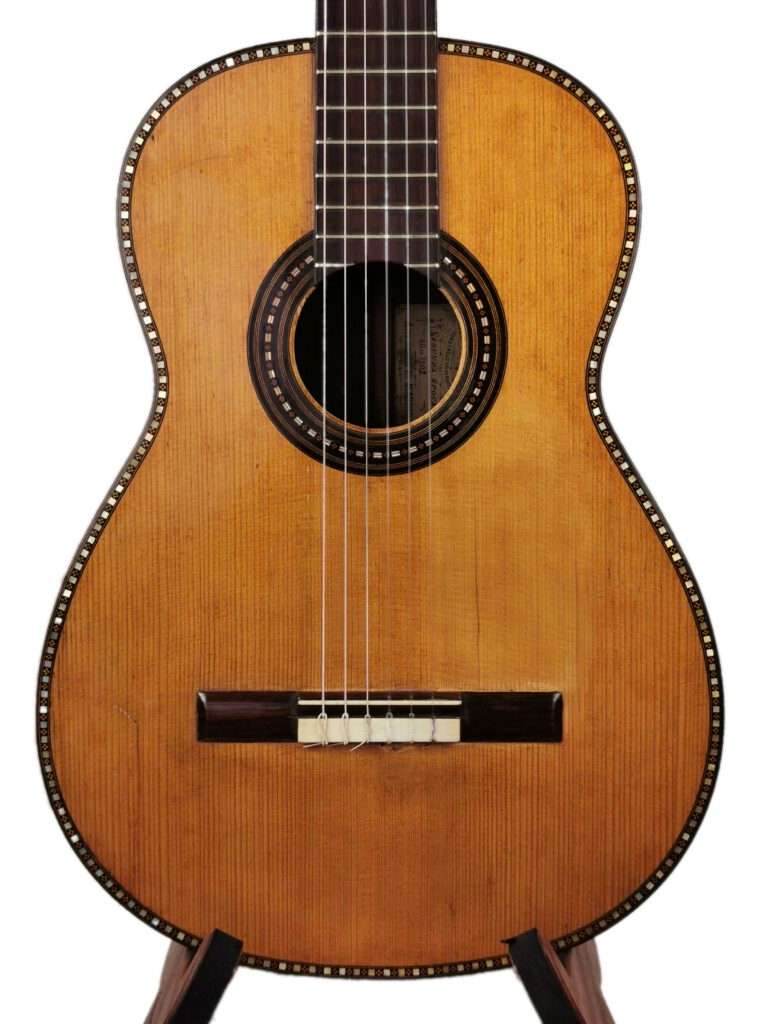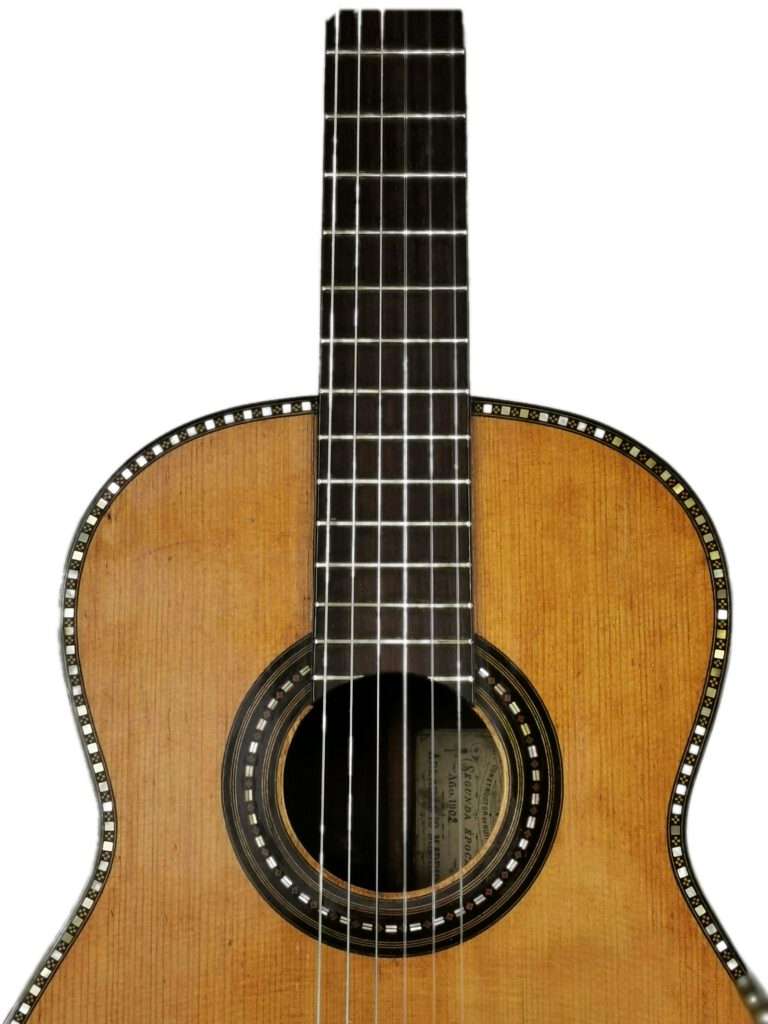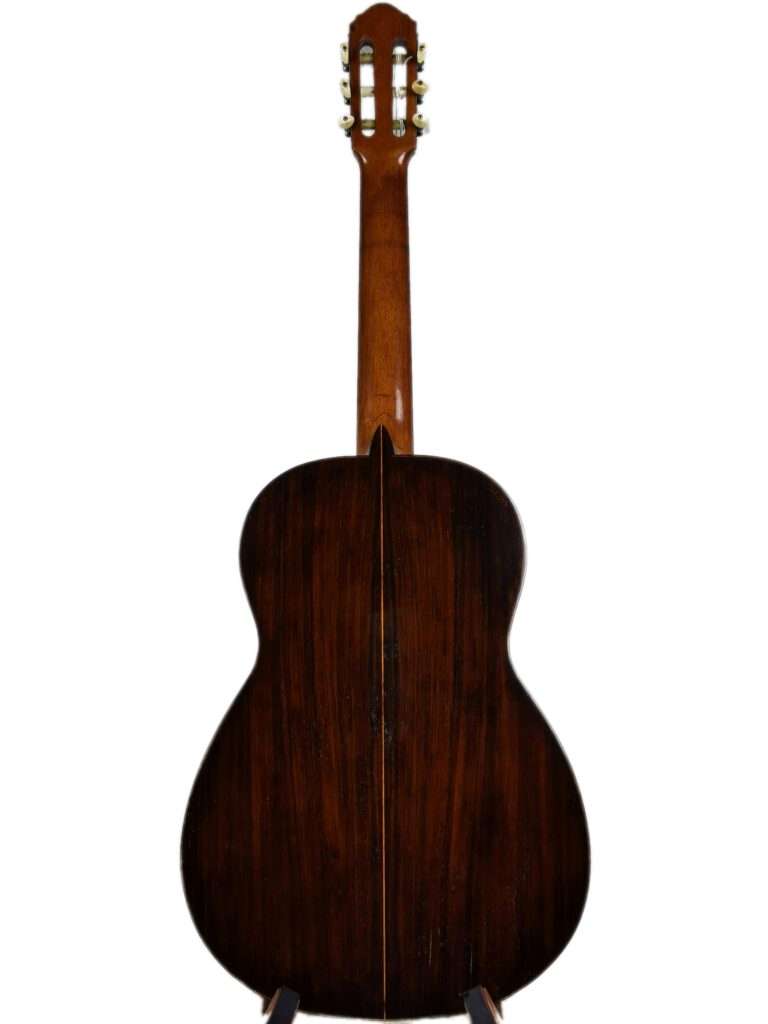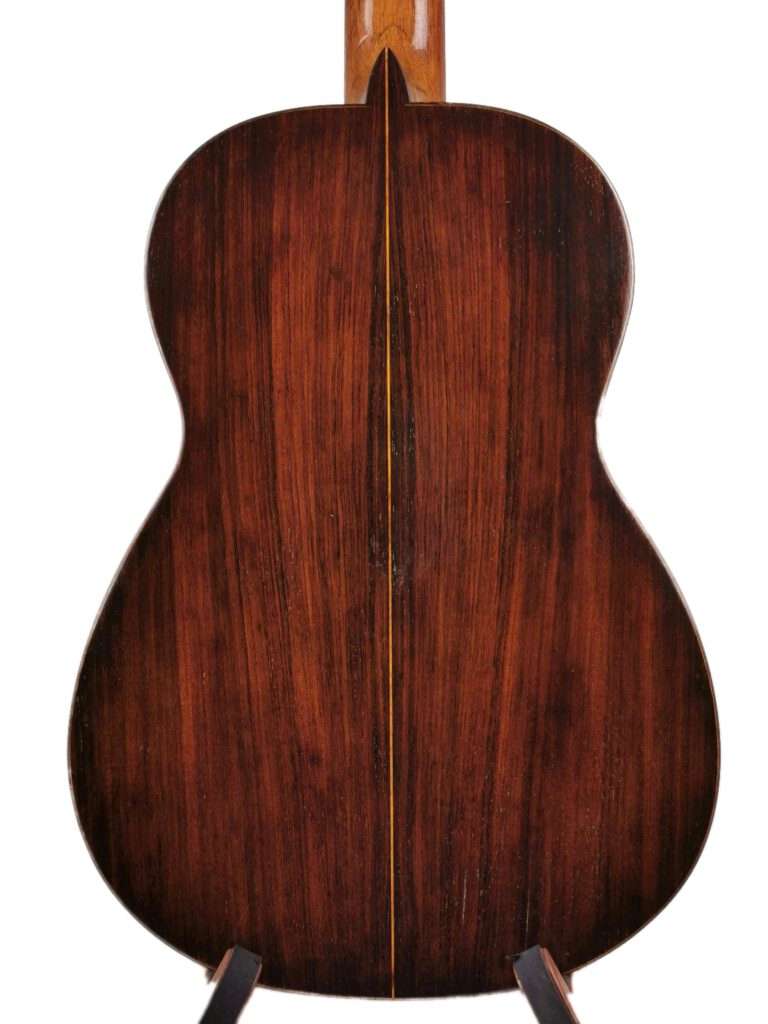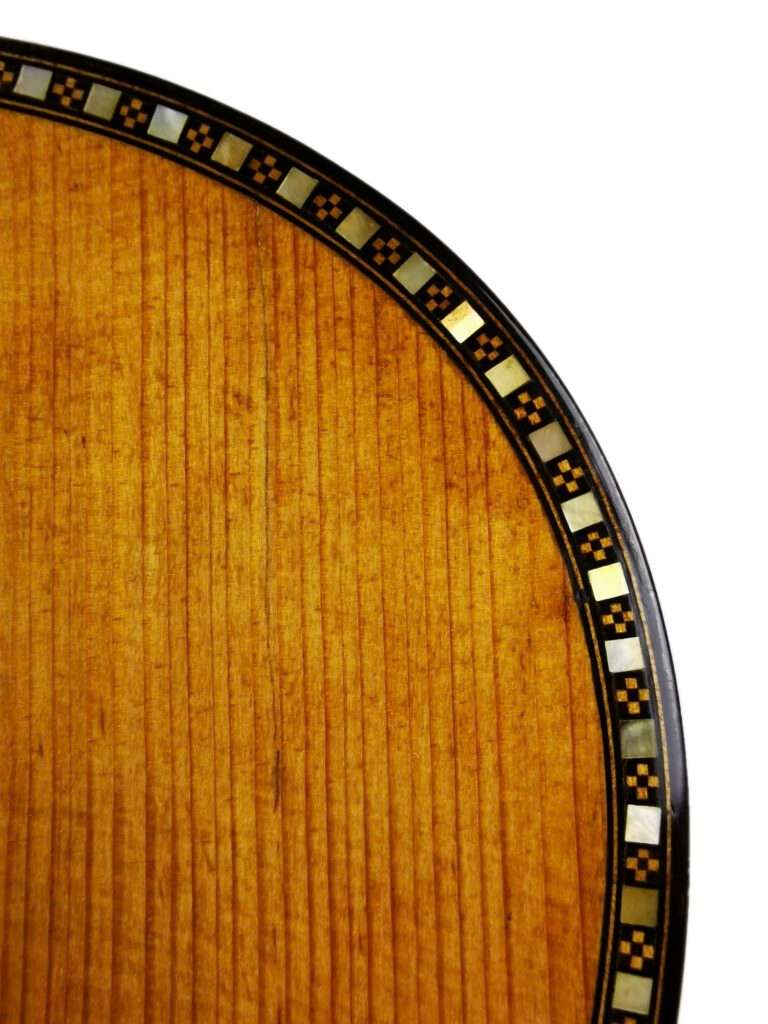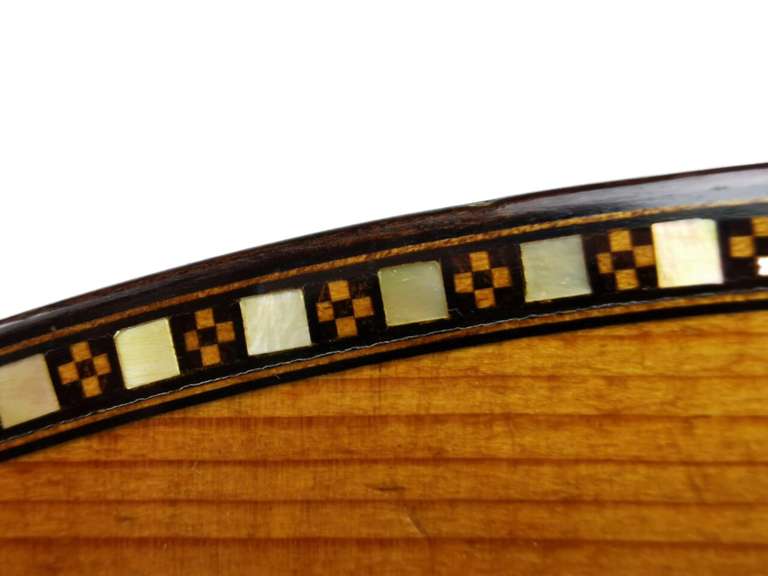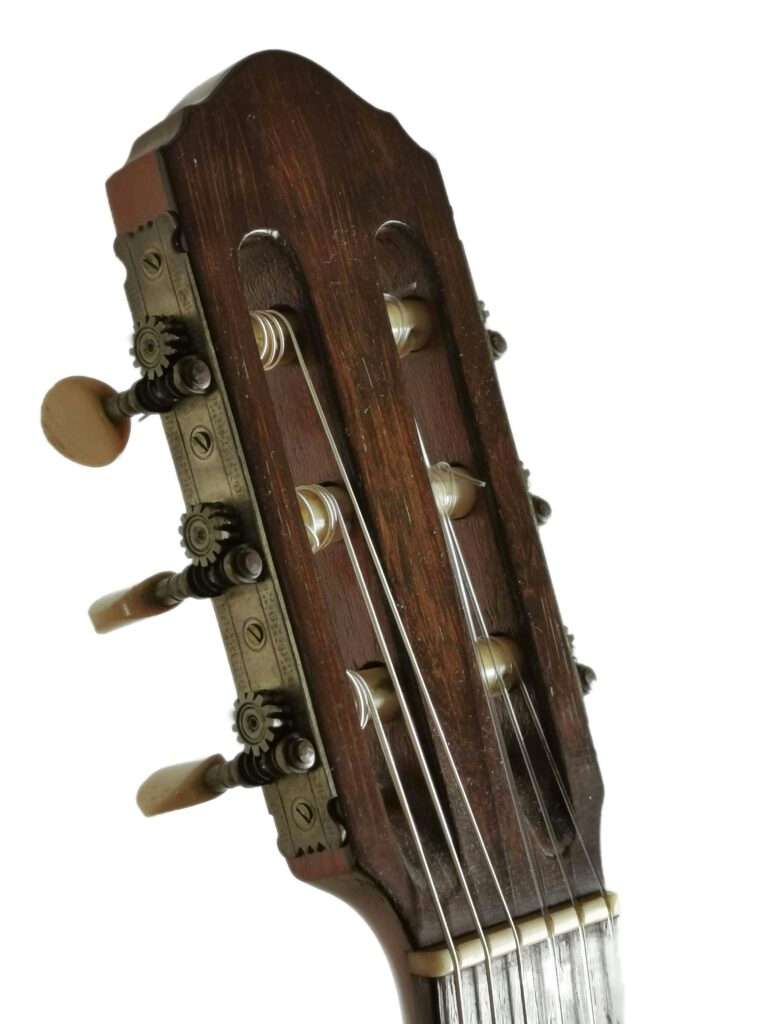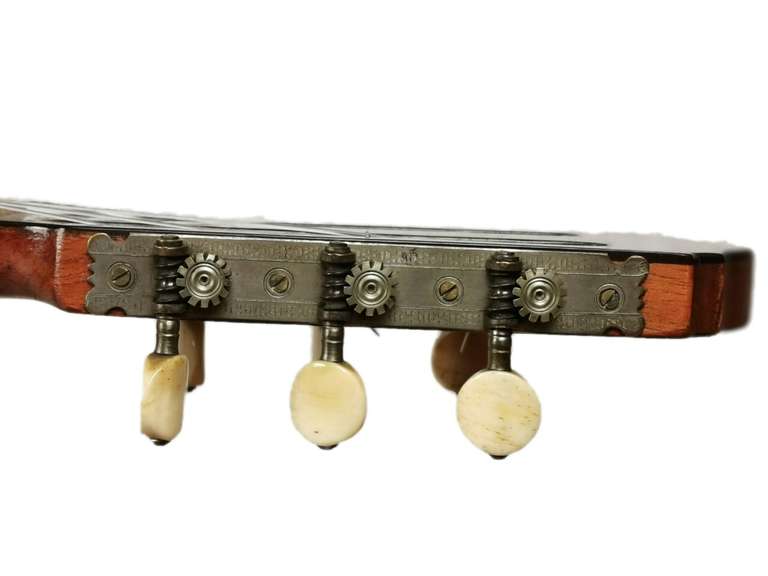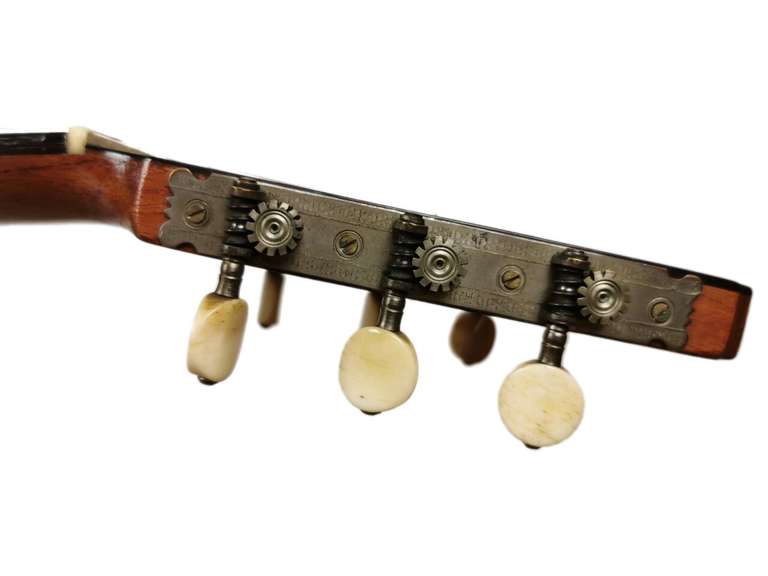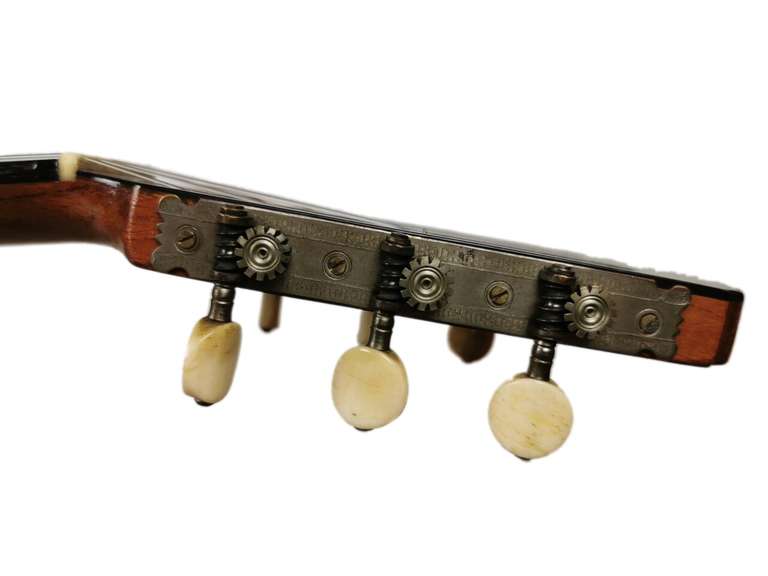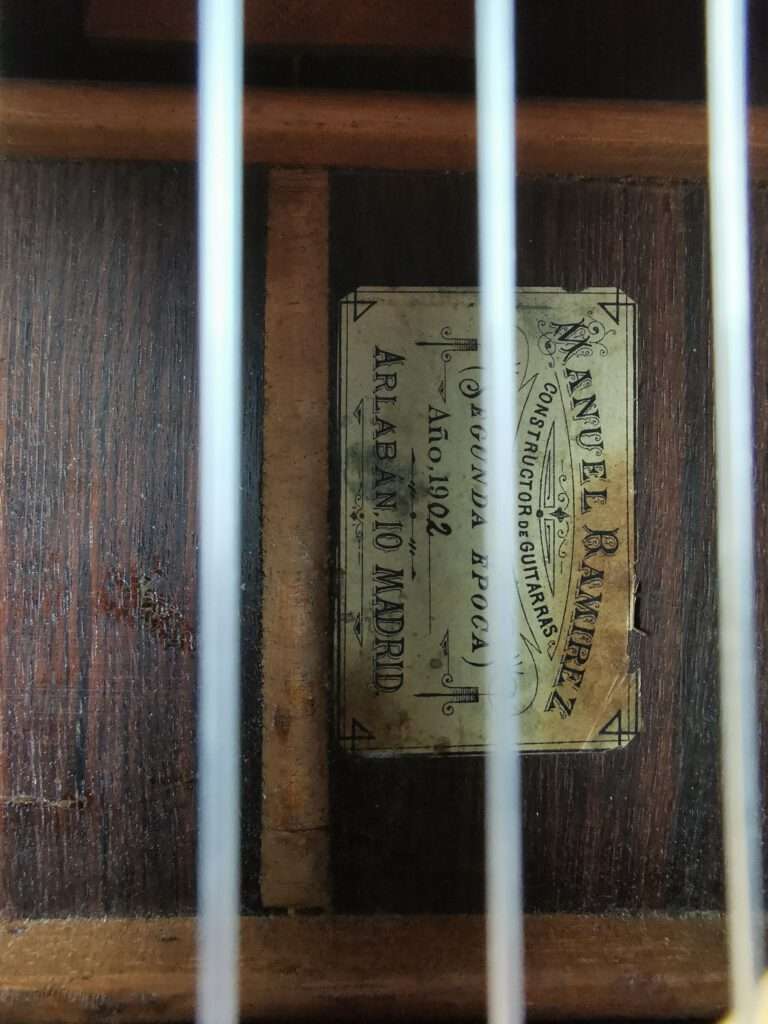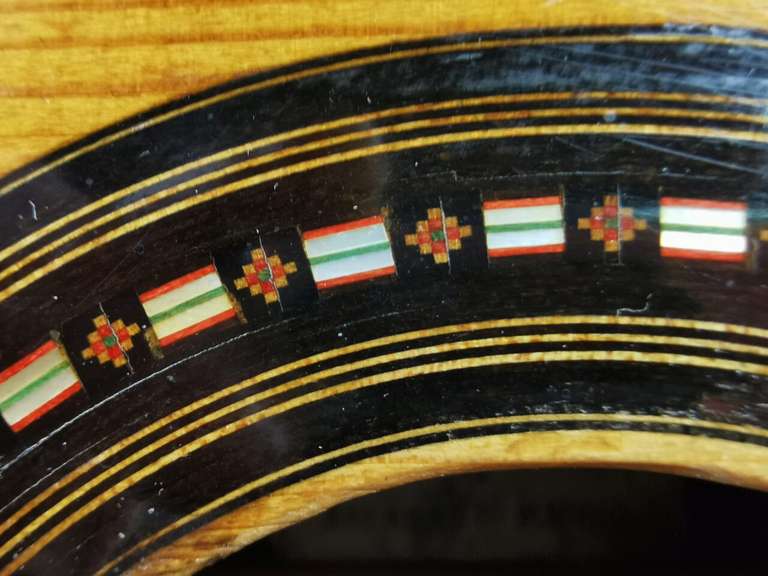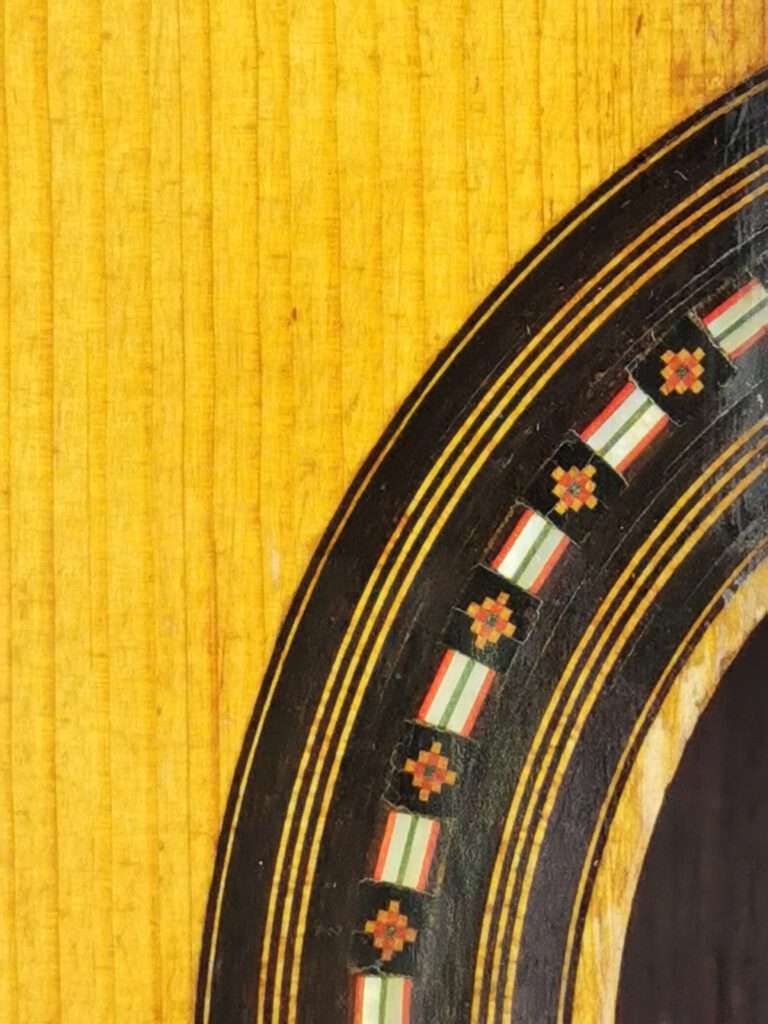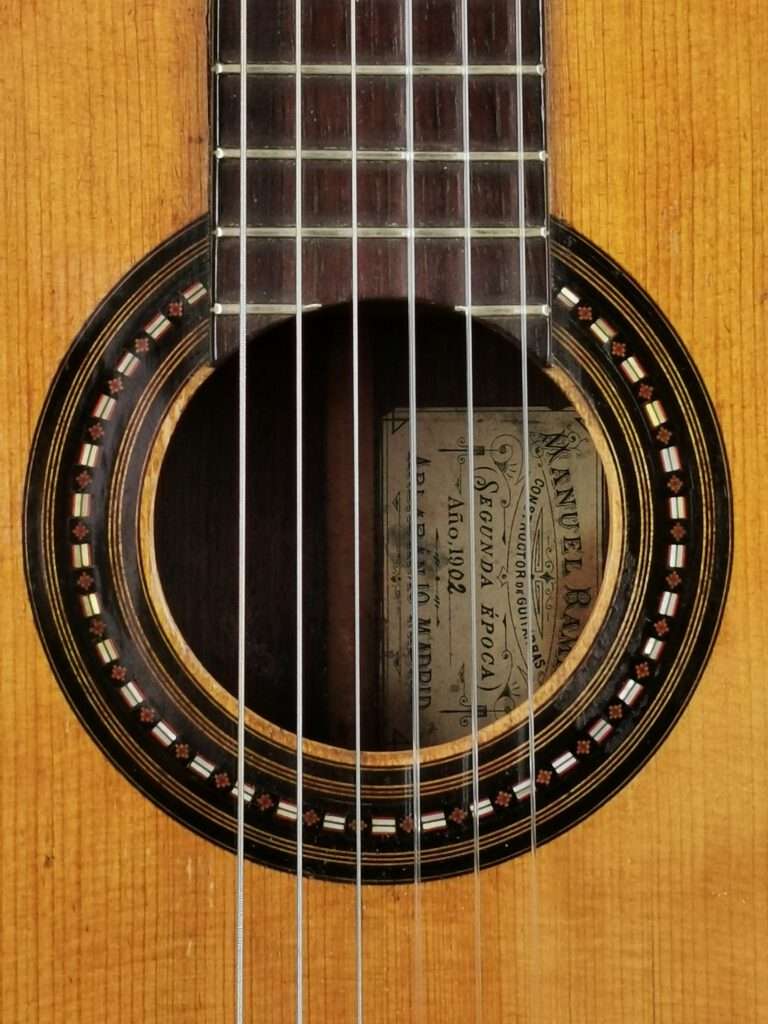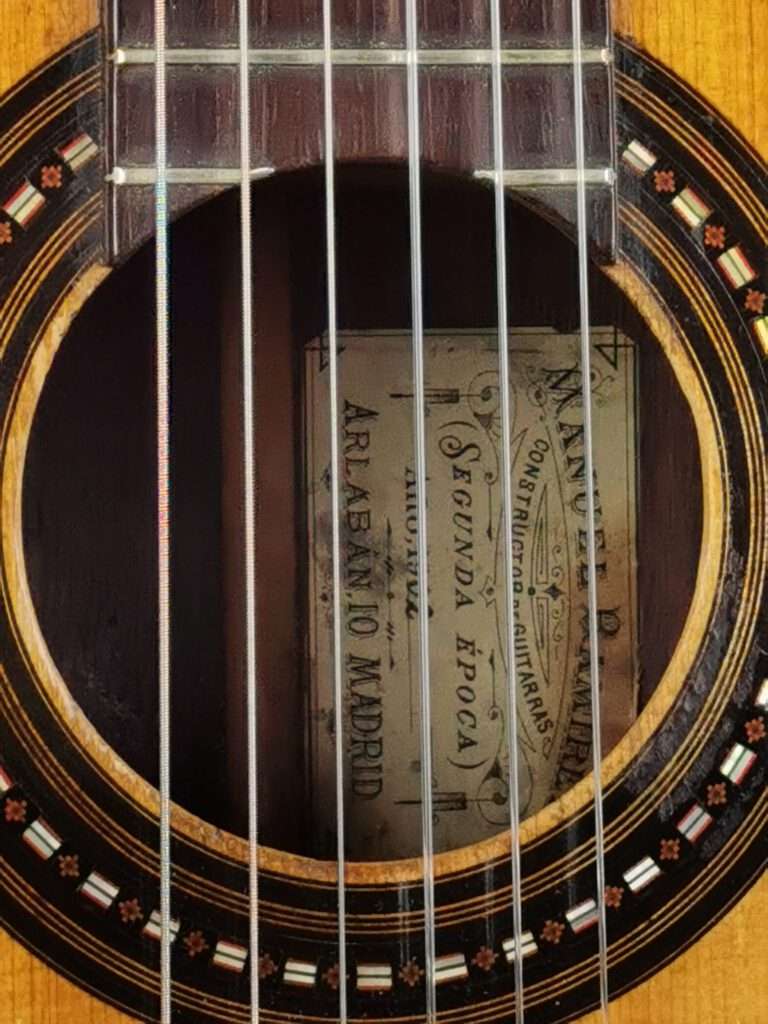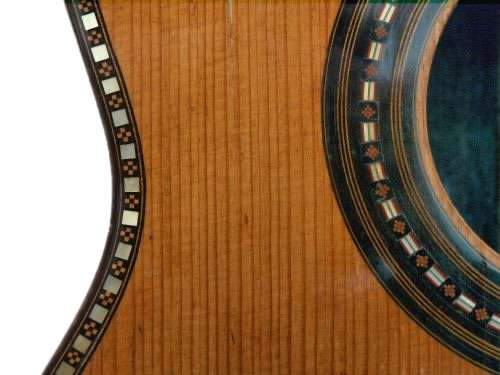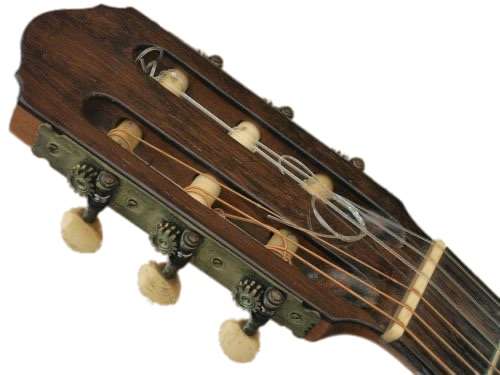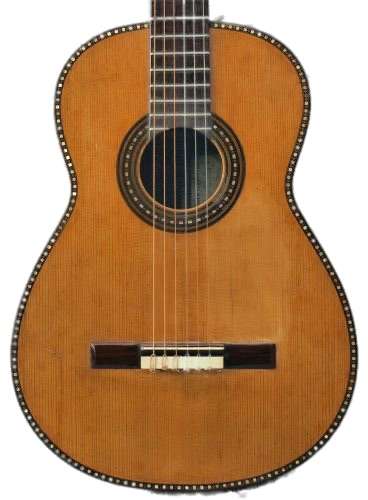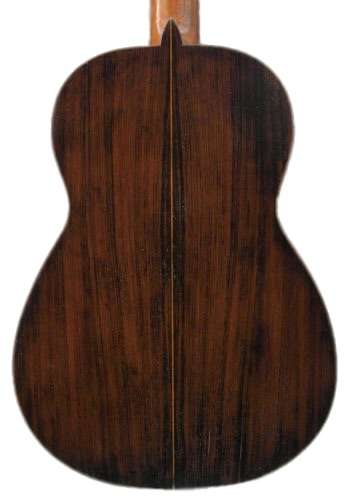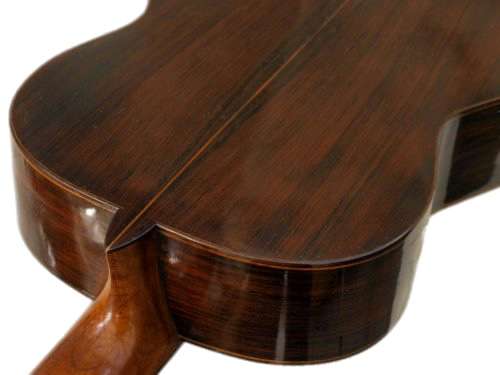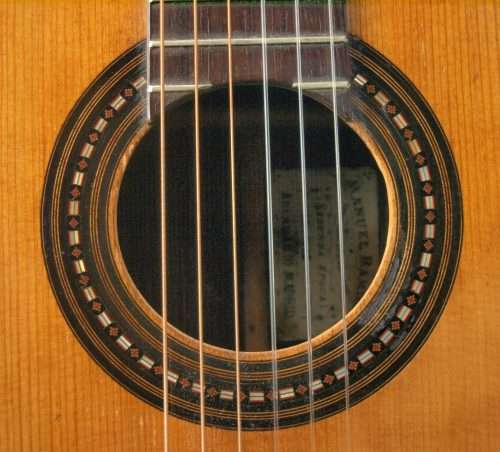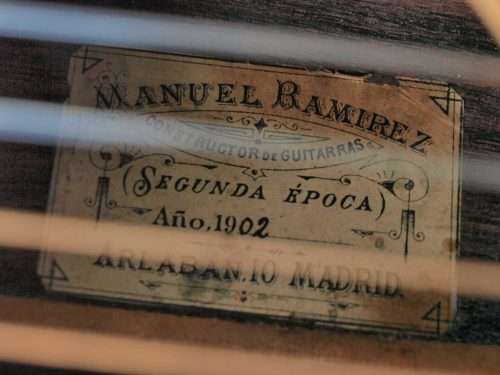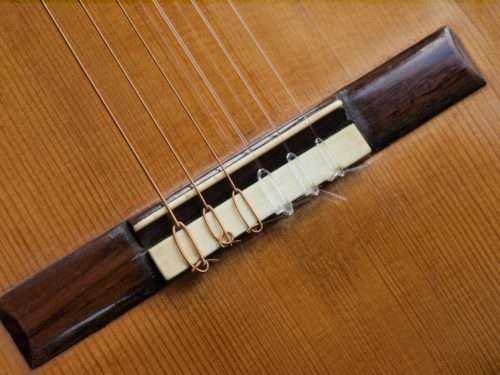Manuel Ramirez 1902
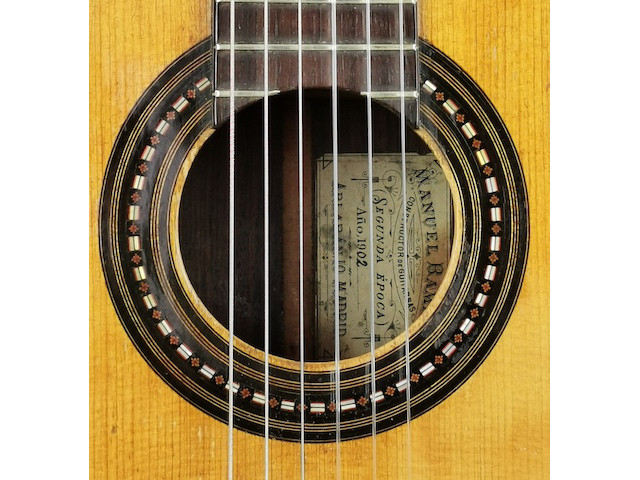
The guitar maker
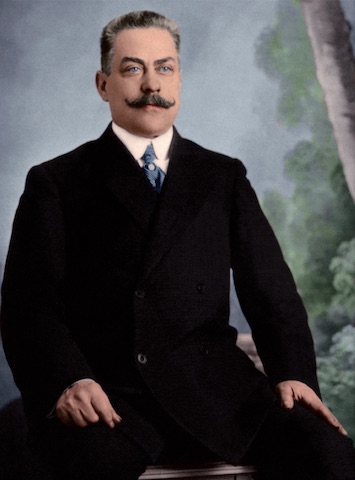
Manuel Ramírez (Alhama de Aragon 1864 - Madrid 1916) is one of the
first luthiers to grasp the significance of Antonio de Torres and continue his work.
In 1891, he opened his own studio after having learned as an apprentice under his older brother, José Ramírez. From here, three of the twentieth century's great guitar makers
would train and rise to prominence: Santos Hernández, Modesto Borreguero and Domingo Esteso.

It was with a guitar built in 1912 by Santos Hernández in Manuel Ramírez's
workshop that Andrés Segovia would spark the meteoric upsurge in popularity of the
classical guitar. This particular guitar is now on display in the Metropolitan Museum of Art in New York, alongside a 1937 Hauser, the other legendary guitar played by Segovia.
Upon the death of Manuel Ramírez in 1916, Santos, Esteso and Borreguero continued
to work for his widow, using labels mentioning Viuda de Manuel Ramírez (Widow of Manuel Ramírez) until she passed away in 1921.
Manuel Ramírez and the other guitar makers from his workshop are deemed the
direct successors of Torres, the founders of the Madrid school of lutherie, credited with the perpetuation of Torres’s ideas throughout the twentieth century and beyond.
Description
This guitar is very light with a shallow body giving a deep sound - almost like those guitars with a tornavoz. The middle range and treble are sweet and rounded.
The text of the label is: Manuel Ramírez Constructor de Guitarras Segunda Epoca Año 1911 Arlaban 10, Madrid. This label is a rare Manuel Ramírez label, only 6 of these labels are seen in 50 years, the others being such as the normal label affixed to Andrés Segovia's 1912 Manuel Ramírez guitar, which was made by Santos Hernández, the foreman of the Manuel Ramírez shop. "Segunda Epoca" means Second Epoch, a take from the labels of the last decades of the immortal Antonio de Torres' numbered guitars.
Body:
Rosewood of uncertain species - (Indian?), dark and straight-grained with simple maple or box purfling and rosewood bindings.
Body length:- 459mm.
Top bout:- 251 mm wide & 78 mm deep.
Waist:- 215 mm & 79 mm deep.
Bottom bout:- 338 mm wide & 78 mm deep.
Shellac french-polished.
Front:
European spruce - a well-quartered top, quite wide-grained except in the centre. The rosette and purfling is a pattern of alternating pearl elements and crosses; the purfling is particularly lovely. The long, slender bridge is rosewood with bone-capped tie-block capping.
The front has seven fan-struts, no bridge plate or bar and slim closing bars at the bottom.
Tuners:
Original tuning machines of unknown manufacture with geometric patterned side-plates and round bone buttons.
Condition
This guitar was made 120 years ago and the fact that it exists in playable condition today is remarkable.
The back is in very good condition with just three short, feint cracks down at the bottom.
The sides have some harmless, longitudinal cracks that have been cleated.
The front has cleated cracks on the treble side and a shorter one down on the bass side that is fixed with traditionally-glued fabric.
| Origin: | Spain Madrid |
| Scale: | 635 mm with 19 frets on a rosewood fingerboard |
| Top: | European spruce |
| Back & Sides: | Rosewood of uncertain species (Indian ?) |
| Tuners: | Original old spanish made |
| Air resonance: | D |
| Weigth: | 1005 grams |
| Neck: | 50mm at the nut with 41mm string spacing |


